“Fire in the hole!” someone hollered, distantly.
Through the pines I heard the unmistakable sound of a skyrocket hissing up, followed by a pair of thunderous reports, one on top of the other, like a double-barrelled elephant gun going off. Two colossal starbursts illuminated the night sky in all the colors of the rainbow, galaxies of lights flaring, crackling, and sizzling before finally winking out.
Now, I like fireworks as much as the next guy, probably more. I once used an aluminum rod tube to launch a pretty good-sized missile over the border—the watery one dividing Wisconsin and Michigan, I mean—in the general direction of the driftboat a couple of my buddies and their guide were in. Unfortunately my aim was a little too true and it was only by the grace of God that the payload didn’t land in their laps. The humor was lost on them although we in the “attack” boat damn near wet ourselves.
This particular pyrotechnics display, however, originating from a bizarre cottage-cum-prepper encampment that a fishing friend calls the “Carnival House,” was not one I greeted with enthusiasm. It was unanticipated, for one thing—the 4th of July was still several weeks off—but more to the point it was unwelcome. I’d come to the river that evening hoping for a hatch of the giant Hexagenia mayfly; the only explosions I expected were the depth-charge detonations of feeding browns, the only incandescence the pulsing glow of fireflies in the streamside woods.
I was used to noise coming from the Carnival House—where, as in the Robert Earl Keen lyric, the party never ends—and, let’s face it, you don’t fish at night for the aesthetics of the experience. You do it for the chance to wrassle with the biggest browns in the river during the one hatch that reliably brings them to the surface, a chance for which you willingly slog through sucking crotch-deep
mud, crash through all manner of clutching vegetation, stumble over malign underwater snags, tolerate hordes of biting insects, surrender staggering numbers of flies to the trees, and generally put life, limb, and tackle at grievous risk for the sake of sport.
More Like This
As one of my fellow Hexmeisters puts it, “It’s a rodeo, not a f-----g poetry reading.”
Still, it’s a little unnerving to be standing in the water while what sounds like a re-enactment of the Battle of Antietam is happening upstream. And as if the bucolic ambiance hadn’t already been shot to hell, a pair of snarling ATVs, their light bars blazing like halogen suns, were racing around on a trail, new since the last time I’d fished this spot, that had been cut in on the other side of the river.
Welcome to American trout fishing, 21st century style.
Of course none of this would have mattered, or even registered, if fish had been working. The hatch was decent, too, but after watching the big creamy mayflies sail past for 20 minutes without detecting a single rise—and even doing what I try hard not to do and shining my headlamp on the water to see if there were bugs there (there were)—I was ready to pack it in.
That’s when I heard the water-slashing boil of a trout taking a Hex—a sound that, once it’s been burned into your memory, smolders there forever. It came from somewhere upstream, and as I eased in that direction I found myself wading relatively open, thigh-deep water on relatively hard, level bottom. Such unencumbered conditions are rare in the no-holds-barred Hex arena and when the trout fed again, allowing me to triangulate his position just downstream of a half-submerged log, I had a gunfighter’s swagger in my stride.
Remember the scene in Open Range where Costner walks right up to the sneering son-of-a-bitch who shot his friends and dusts him? Yeah, like that.
Well, maybe not quite like that. Trout don’t shoot back, meaning I had the luxury of figuring out how to compensate for a vagrant tendril of current that insisted on ushering my fly, a rubber-legged job called a Nealy’s Hex, out of the strike zone. (Fish the Hex hatch long enough, and you develop a sixth sense about these things.) With everything finally dialed in I put one in his wheelhouse, heard the toilet flush, and knew, the instant the line came tight, that I was into a heavy fish. When your immediate impression is of unyielding mass, it tells you something.
The brown rampaged around like a rank saddle bronc but everything that had to go right and hold together did. I wasn’t about to mess around trying to tape him and he was the kind of big-all-over fish better measured in pounds than inches anyway; the kind of fish whose possibility first seduces you to dip your toes into the Cult of the Hex and whose reality, once you’ve been initiated, dooms you to stalk the streams by night.
The following evening found me on the river again. My wife raised an eyebrow when I informed her I planned to fish but, as I do every year during Hex time, I trotted the old chestnut out of the stable and reminded her “You have to strike while the iron is hot.” Even under ideal conditions the hatch tends to be short-lived—ten days, tops—and with the weather growing increasingly erratic and extreme the window can slam shut at any moment. That’s assuming it opens at all; some years, most recently 2019, the Hex hatch simply doesn’t happen. Not on the river I fish, anyway.
The point being that there’s a heightened sense of urgency to fishing the Hex hatch, a FOMO factor that impels me to make the 140-mile round trip as many
times as I can get away with it. This behavior is indefensible from any kind of eco-ethical perspective but then, it’s the American way to create as large a carbon footprint as possible in the pursuit of recreation.
If there’s a silver lining to all this driving, it’s the chance to listen to some good late-night jazz and blues programs on public radio, programs that air long past my normal bedtime. Bopping along to the music also helps keep me awake, and therefore in better position to avoid the deer, raccoons, possums, rabbits, foxes, bobcats, low-flying owls, tottering drunks, and any other critters that suddenly appear in the headlights.
For night two of Hexfest I chose a spot a few miles further upstream. The road there carries little traffic; the few dwellings are widely scattered; swatches of shaggy native prairie are quilted in among the cornfields. A range of low, wooded hills defines the skyline. It’s not “The Wild” by any stretch of the imagination, but it has a tranquil, far-from-the-madding-crowd feel that lends a grace note to the fishing.
No thunderous fireworks or snarling ATVs, in other words.
What there was, instead, was the chanting of whippoorwills, the croaking of frogs, and the yipping of coyotes. The hooting of owls would have completed the orchestration and I was a little surprised that none joined in.
The fishing went according to the usual script, too. I stepped in a hole and came within about a millimeter of overtopping my waders, then got mired in cement-like mud, began falling backwards, and only by gripping my rod between my knees and frantically windmilling my arms was I able to right myself. I missed the same fish twice with the Nealy’s Hex (including on my first cast of the night), and when he wised up to it reacquainted myself with the joy of changing flies amid a haze of no-see-ums while holding a Mini Maglite between your teeth.
The fish gave that pattern, a Polyback Emerger, no love whatsoever. At that point the hatch was beginning to peter out, the rises were growing fewer and farther between, and with the clock clearly ticking I changed flies again, this time to a little spent-wing number. He crushed it on the second cast. The line came tight, the starlight rodeo was on. I managed to hold on long enough for a successful conclusion and if this fish didn’t measure up to the one from the night before, he didn’t miss by much.
I wanted desperately to follow the hatch upriver and make it three nights in a row but decided that that was a bridge too far, domestically speaking. A raised eyebrow is one thing, fists on the hips quite another.

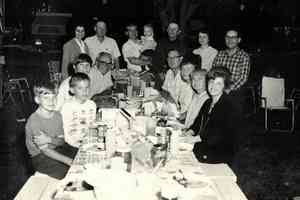
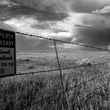


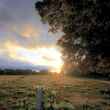



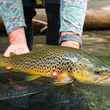

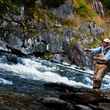



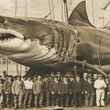
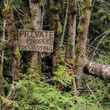
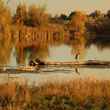
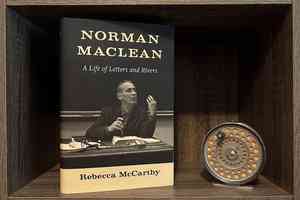

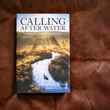

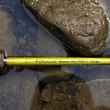
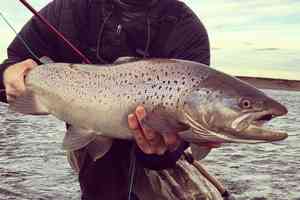
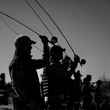


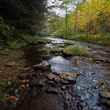

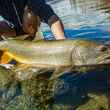
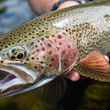

Comments